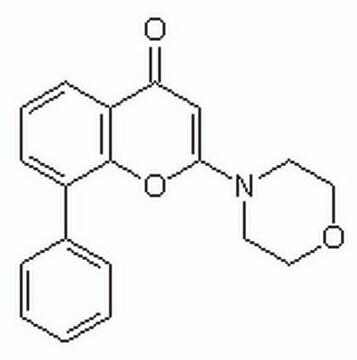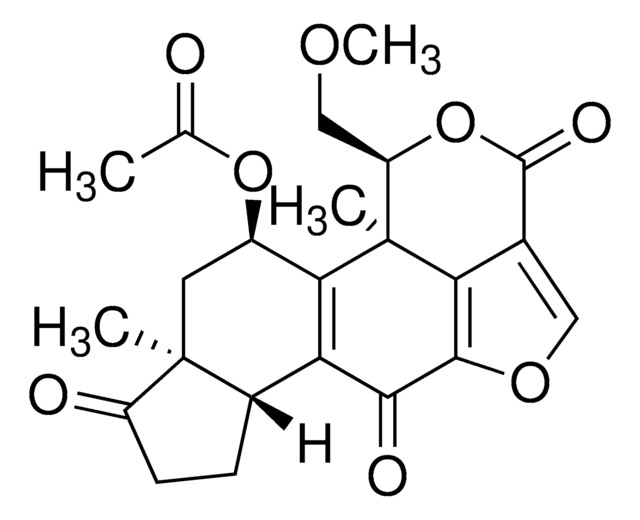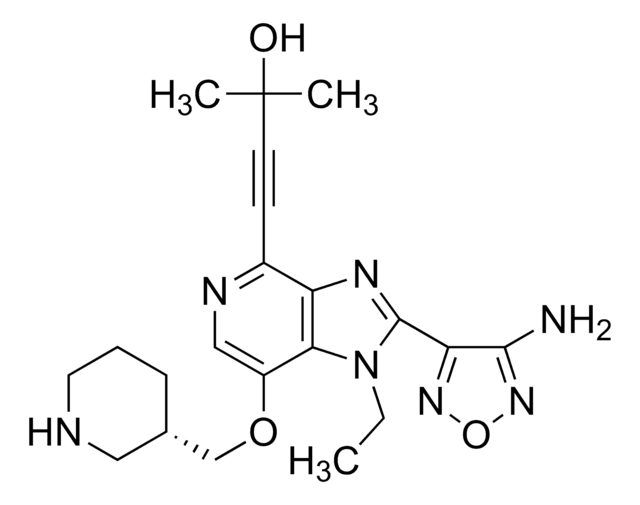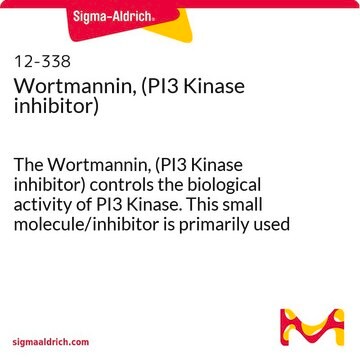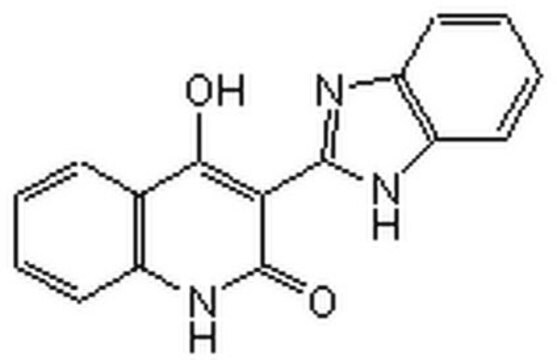L9908
LY-294,002 hydrochloride
from microbial (Staphylococcus roseus), ≥98% (HPLC), solid, PI3K inhibitor
Sinonimo/i:
2-(4-Morpholinyl)-8-phenyl-1(4H)-benzopyran-4-one hydrochloride
About This Item
Prodotti consigliati
Nome del prodotto
LY-294,002 hydrochloride, solid, ≥98% (HPLC)
Origine biologica
microbial (Staphylococcus roseus)
Livello qualitativo
Saggio
≥98% (HPLC)
Stato
solid
Colore
white to off-white
Solubilità
DMSO: >5 mg/mL
H2O: insoluble
Temperatura di conservazione
2-8°C
Stringa SMILE
O=C1C=C(Oc2c1cccc2-c3ccccc3)N4CCOCC4
InChI
1S/C19H17NO3/c21-17-13-18(20-9-11-22-12-10-20)23-19-15(7-4-8-16(17)19)14-5-2-1-3-6-14/h1-8,13H,9-12H2
CZQHHVNHHHRRDU-UHFFFAOYSA-N
Descrizione generale
Applicazioni
- phosphoinositide 3-kinase (PI3K) in human lung cancer cell line
- autophagy in mesenchymal stem cells (MSCs).
- serine/threonine-specific protein kinase (AKT) signaling in fibroblasts and cardiac cells.
Azioni biochim/fisiol
Caratteristiche e vantaggi
Codice della classe di stoccaggio
11 - Combustible Solids
Classe di pericolosità dell'acqua (WGK)
WGK 3
Punto d’infiammabilità (°F)
Not applicable
Punto d’infiammabilità (°C)
Not applicable
Dispositivi di protezione individuale
Eyeshields, Gloves, type N95 (US)
Scegli una delle versioni più recenti:
Possiedi già questo prodotto?
I documenti relativi ai prodotti acquistati recentemente sono disponibili nell’Archivio dei documenti.
I clienti hanno visto anche
Articoli
We presents an article on Autophagy in Cancer Promotes Therapeutic Resistance
Sigma-Aldrich presents an article about how proliferating cells require the biosynthesis of structural components for biomass production and for genomic replication.
Il team dei nostri ricercatori vanta grande esperienza in tutte le aree della ricerca quali Life Science, scienza dei materiali, sintesi chimica, cromatografia, discipline analitiche, ecc..
Contatta l'Assistenza Tecnica.